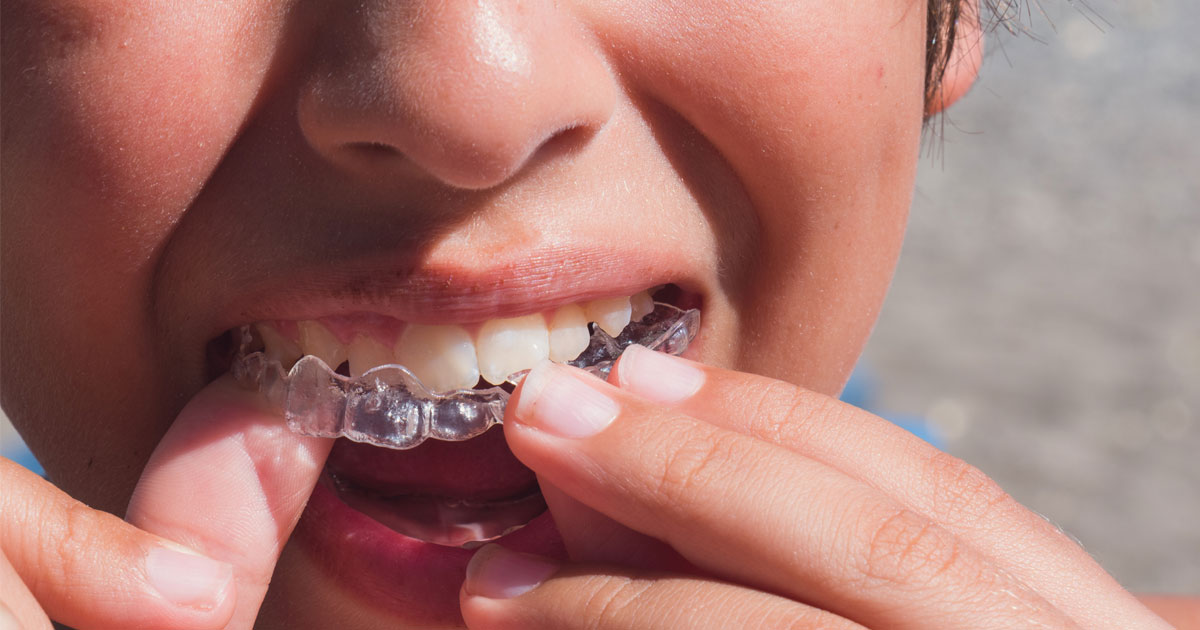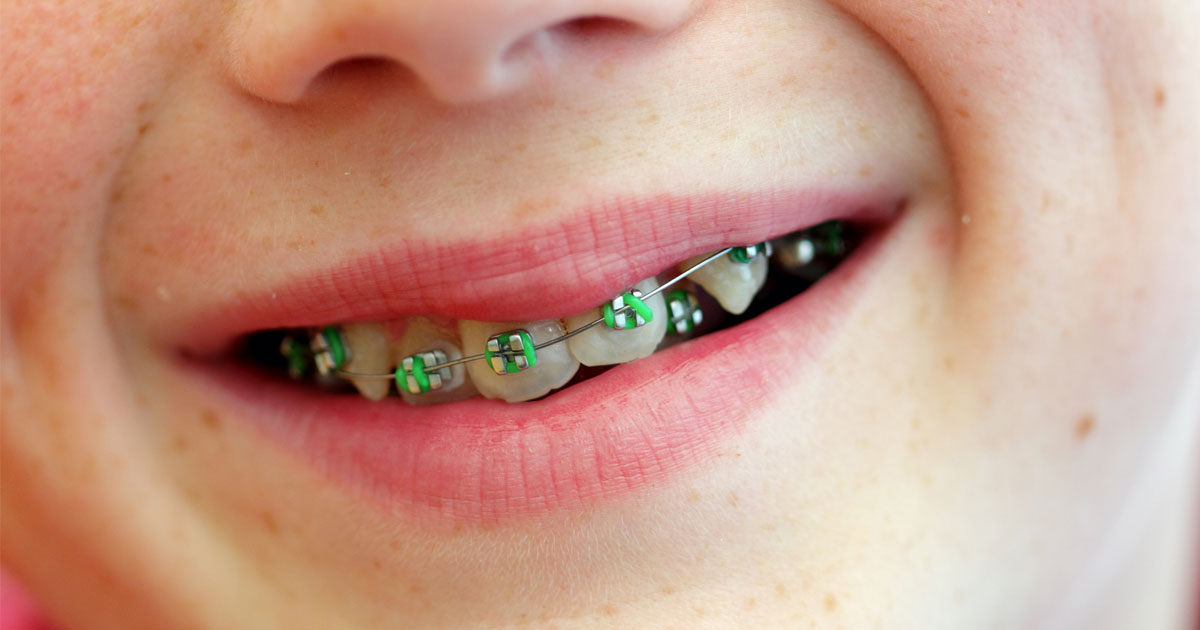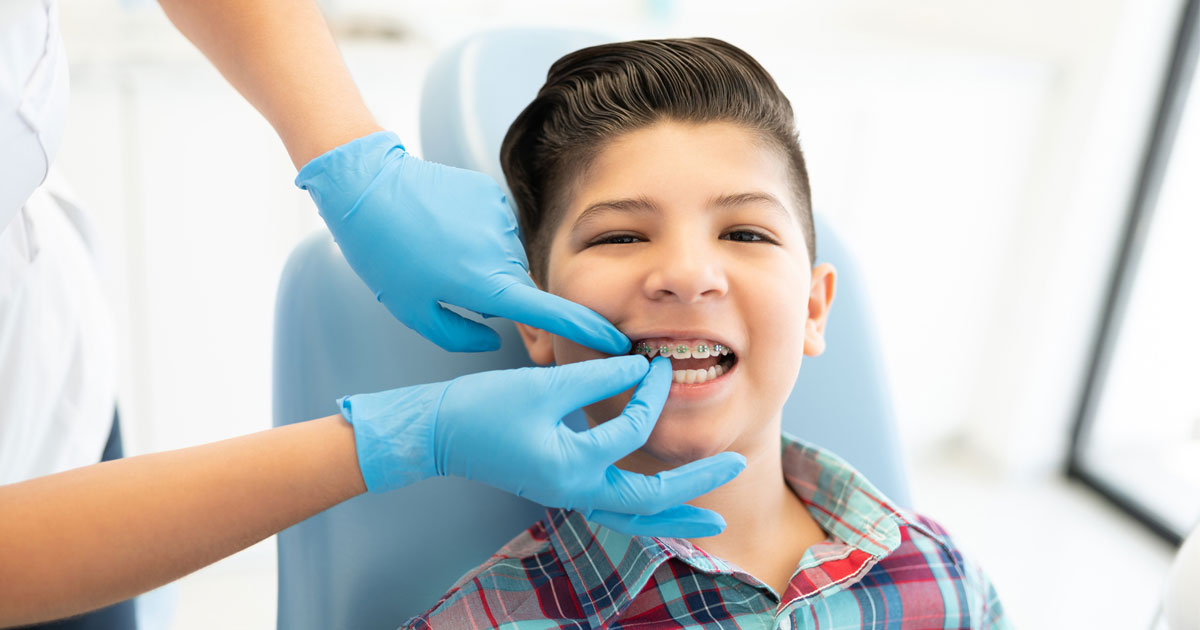If you’re considering Invisalign or braces, you’re probably wondering which one is the better option for you. While Invisalign is more expensive and not as commonly covered by insurance, it does provide a number of benefits that may make it worth the investment. Here’s a look at some of the key differences between Invisalign and braces to help you make a decision.
Invisalign: an Alternative to Braces
Invisalign offers an alternative to traditional metal braces. Unlike metallic braces, Invisalign consists of clear, plastic aligners that fit over the teeth. A patient wears their aligners for a set period and then switches to the next pair in their sequence without having to make a trip to the orthodontist. By gradually shifting teeth over a span of weeks or months, Invisalign aims to reduce any discomfort associated with sudden movement and provide patients with straightened teeth in as little time as possible. Moreover, Invisalign’s clear aligners offer users a virtually invisible way of straightening their teeth and provides them with increased confidence in their appearance compared to those who get traditional metal braces.

All things considered, Invisalign is an ideal choice for many adults who are looking for discreet solutions for straightening their teeth. Further research into its efficacy has demonstrated that not only does it have comparable results when used by adults, but it also takes between 6 – 18 months which is still less as compared to traditional braces that typically take anywhere from 12 – 36 months. As such, Invisalign proves itself to be an effective and efficient solution for achieving straighter teeth with improved comfort levels for adults seeking alternatives to traditional metal braces.
Braces Are More Traditional vs Invisalign
Braces are the go-to solution when it comes to addressing issues with crooked teeth. For decades, orthodontists have used metal wires and brackets to realign patients’ teeth as part of a process known as braces. The braces work by applying pressure against individual teeth, gradually pulling them into the desired position over time. The brackets are typically attached to each tooth with an adhesive and then connected by wires running along the upper and lower arch of the mouth. Oftentimes, orthodontists use rubber bands to further solidify the connection between the brackets and create more tension.

While it is a somewhat lengthy process, braces provide reliable results for most patients; in fact, many individuals opt for full brace treatment for maximum effectiveness due to their traditional approach that has been tried and tested for decades. Thus, when dealing with crooked teeth there is no better option than braces – a time-tested remedy that helps ensure straight teeth in no time.
Invisalign More Expensive vs. Braces?
Invisalign has been gaining prominence in recent years with people looking for a more aesthetically pleasing way to straighten their teeth. The concept of snap-on clear aligners and invisible teeth correction has naturally attracted those willing to pay extra for the privilege — particularly since traditional braces required the wearer to be much more conscious of their appearance. While Invisalign is often thought of as a more expensive option than braces, many people find that it is worth the price due to the added benefits. With Invisalign, the aligners can be removed when eating and brushing, making oral hygiene much easier.
Even social activities like going out to eat or attending events can be less awkward for those with Invisalign since there are fewer issues associated with food sticking in brackets or wires poking one’s mouth. Furthermore, since appointments are only necessary every 3 weeks or so as opposed to every 4–6 weeks with braces, it may even save time in scheduling visits with an orthodontist and can make an individual’s life less disrupted. Although Invisalign may come at a higher cost than braces, there are many valid reasons why some would gladly make that financial commitment to maintain an aesthetic smile and improved oral health.
Invisalign vs Braces: Pros and Cons
Invisalign Is Less Noticeable
If a person is considering ways to move their teeth into a straighter alignment, Invisalign is an excellent choice for adults who are self-conscious about their appearance. While traditional braces with metal wires and brackets are highly effective, they are also quite noticeable. On the other hand, Invisalign aligners provide the same orthodontic benefits while offering a far less conspicuous way of moving teeth. The aligners are made of clear plastic – and sometimes even nearly invisible composite — that’s custom-molded to fit the teeth perfectly. As the wearer begins adjusting from one aligner to the next over time, the teeth gradually move into a desired position as determined by an orthodontist.
As such, people can enjoy a better positioned smile without anyone having to know about their use of clear braces. Furthermore, removable Invisalign aligners make it easy to brush and floss regularly; something that may be much more difficult with metal braces in place. For individuals who don’t want metal brackets and wires on display in daily life, Invisalign is perfect for achieving straight teeth more discreetly while still providing excellent results. With its near-invisible profile and other benefits, it’s no wonder why so many adults now choose Invisalign over traditional braces when looking for subtle solutions for aesthetically pleasing smiles.

Invisalign Takes Longer (on average) vs Braces
Invisalign is an attractive option for straightening teeth, as it doesn’t require brackets, wires or metal bands in the mouth and is virtually invisible. However, many people may be surprised to learn that on average, Invisalign takes a bit longer than orthodontic braces to produce results. While the time frame for typical braces ranges from 6-12 months, treatment with Invisalign may take between 12-18 months. This is due principally to the fact that when using braces, a more intensive force can be applied to move teeth into alignment quicker.
By comparison, Invisalign uses plastic aligners to gently place pressure on teeth over time and cannot use the same level of force. Additionally, Invisalign requires several sets of aligners which need to be changed at various intervals throughout the course of treatment in order to maintain progress. Taking these factors into account then, it stands to reason that treatment with Invisalign will typically take slightly longer than it would with traditional braces. Despite the lengthier timeframe however, most people might agree that being able to undergo teeth straightening without pain or visible hardware makes even longer treatment times worth it!.
Invisalign Is More Comfortable vs Braces
Patients who need orthodontic treatment have many options, but one of the most popular is Invisalign. While traditional braces are still widely-used, many patients these days prefer a more comfortable and convenient alternative. Instead of using metal brackets and wires, Invisalign utilizes an adjustable clear aligner system for straightening teeth.
Not only does this system not require cumbersome wires or frequent adjusting like braces do, it is also much less noticeable in day-to-day life. Additionally, the personalized series of aligners is designed to be comfortable in the mouth while shifting and repositioning teeth into their desired positions. For those looking to make more subtle aesthetic changes to their smile, Invisalign is an excellent option that can provide faster and more comfortable results than bracing solutions.
Braces Are More Effective for Severe Misalignments

Braces and Invisalign have become popular choices for those seeking to correct misalignments of the teeth. However, there are some key differences between these two dental solutions. Generally speaking, braces are the better option when it comes to more severe misalignments. The brackets and wires can be adjusted as needed in order to effectively guide the teeth into a more pleasing alignment, making them an ideal choice for those with more complex cases. Alternatively, Invisalign is often the more suitable option for milder misalignments.
Unlike braces, which are visible on the patients’ teeth, aligners used with Invisalign are virtually invisible during treatment, meaning that patients can go about their daily lives without feeling self-conscious. Ultimately, both braces and Invisalign can be successful in correcting misaligned teeth; however, identifying which type of correction is most appropriate depends on the severity of each case. Therefore, it’s essential to consult a qualified dentist who can provide professional advice. With the right approach, a beautiful smile may soon be within reach.
Both Require Regular Orthodontist Visits
For individuals looking to straighten their teeth, there are typically two options available; traditional metal braces or Invisalign aligners. Both are used to shift the position of teeth, and both come with the requirement of regular visits to an orthodontist. While the details of each differ, it is essential for successful treatment that commitment be made to regularly scheduled appointments for either option.

With metal braces, a wire and brackets are attached to the teeth and adjusted by a professional at appointments typically every 4-6 weeks. Invisalign aligners are crafted from plastic and used to move teeth incrementally over time. They must also be periodically changed by a certified professional in order to remain effective throughout the course of treatment which can last anywhere between 12-18 months on average. Although different in terms of procedure, cost and convenience, both require commitment and follow up visits with an orthodontist in order to be completely successful in achieving desired results.
Invisalign vs Braces: Personal Preference
In conclusion, it is understandable that straightening one’s teeth can seem like a daunting task, however both traditional metal braces and Invisalign offer viable solutions with potential benefits depending on individual needs. What remains constant for both choices, however, is the need for consistency in care and commitment to regular visits throughout treatment in order for them to be fully effective.
Although there is no one perfect treatment that works for everyone, it is important to consider both Invisalign and braces as potential solutions for correcting orthodontic misalignments. While braces are considered the gold standard of traditional orthodontics, Invisalign may be a better fit for those who are looking for a more discreet treatment. Because Invisalign aligners are made from clear plastic material and designed to fit snugly on teeth, they can often be difficult to detect even at close range. Conversely, metal braces may not offer the same level of discretion but tend to be more durable than Invisalign and require fewer replacement aligners throughout the treatment process.
Ultimately, the decision between Invisalign and braces comes down to personal preference depending on one’s lifestyle and individual circumstances. With guidance from a qualified orthodontist, patients can determine which form of treatment is best suited for their specific needs. Above all else, it is essential to discuss both options with an experienced professional in order to ensure that the chosen course of action is as safe and effective as possible. Invisalign and braces are both effective methods of straightening teeth, but they have different benefits and drawbacks. If you have any questions about which treatment option is right for you, please don’t hesitate to contact us for more information. We would be happy to help you find the perfect solution that meets your specific individualized needs.
*Editor’s Note: This article was originally published Jan 30, 2019 and has been updated December 8, 2022.

Dr. Tyler Robison is an alum of Mesa’s Mountain View High School. He graduated from Brigham Young University before being accepted to the “Top Ten-nationally ranked” University of Louisville in Kentucky, where he earned his Doctorate in Dental Medicine and a Master’s Degree in Oral Biology. He graduated with honors in the top ten percent of his class. Dr. Robison continued at the University of the Pacific in San Francisco, where he received a second master’s degree in dental science and his orthodontic certification.


